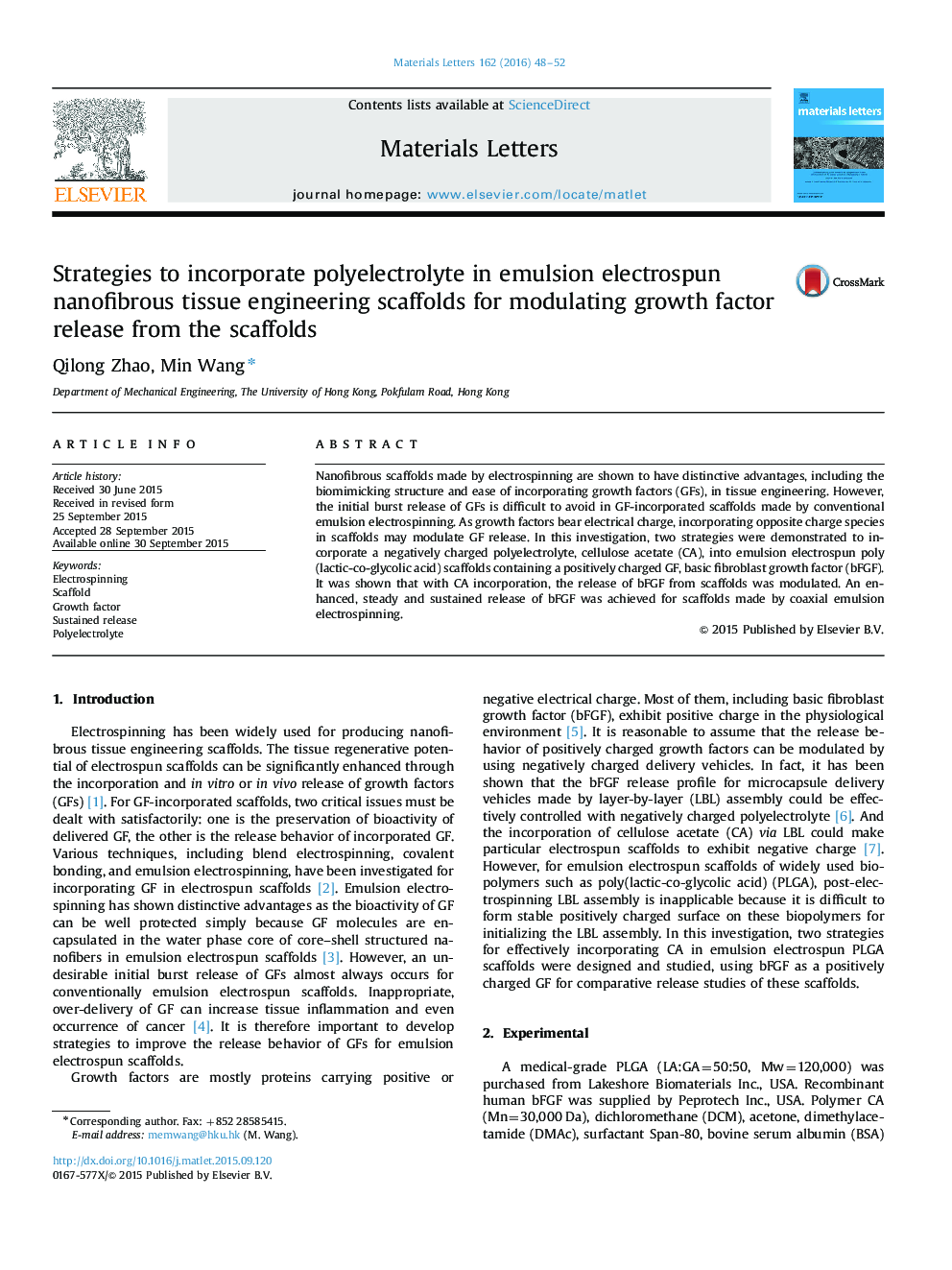| Article ID | Journal | Published Year | Pages | File Type |
|---|---|---|---|---|
| 1641657 | Materials Letters | 2016 | 5 Pages |
Abstract
Nanofibrous scaffolds made by electrospinning are shown to have distinctive advantages, including the biomimicking structure and ease of incorporating growth factors (GFs), in tissue engineering. However, the initial burst release of GFs is difficult to avoid in GF-incorporated scaffolds made by conventional emulsion electrospinning. As growth factors bear electrical charge, incorporating opposite charge species in scaffolds may modulate GF release. In this investigation, two strategies were demonstrated to incorporate a negatively charged polyelectrolyte, cellulose acetate (CA), into emulsion electrospun poly(lactic-co-glycolic acid) scaffolds containing a positively charged GF, basic fibroblast growth factor (bFGF). It was shown that with CA incorporation, the release of bFGF from scaffolds was modulated. An enhanced, steady and sustained release of bFGF was achieved for scaffolds made by coaxial emulsion electrospinning.
Related Topics
Physical Sciences and Engineering
Materials Science
Nanotechnology
Authors
Qilong Zhao, Min Wang,
